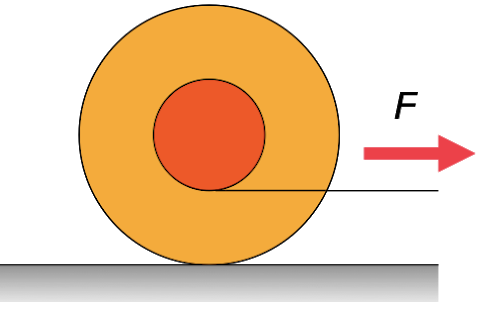Assume that the yoyo is always rolling without slipping.
Physical experiments shows that the yoyo would roll to the right.
I'm aware of some ways to show this without analytically solving the system (e.g. by changing the axis of rotation to be the point of contact with the yoyo and the floor). However, as an exercise I am trying to prove this result analytically.
To show this, my intuition would be that the final goal is to show that the torque generated by the force $F$ on the red wheel is smaller in magnitude than the torque generated by the static friction force (at the point of contact with the floor) on the larger orange wheel.
Some initial equations I laid out were:
$\tau_1 = F \cdot r_1$
i.e. equation for torque $\tau_1$ generated by the force $F$, where $r_1$ is the radius of the red disk
$\tau_2 = F_f \cdot r_2$
i.e. equation for torque $\tau_2$ generated by friction force $F_f$, where $r_2$ is the radius of the orange disk
Next, I try to find a relationship between $F$ and $F_f$, but I am getting confused here. Since we are not slipping, this implies the only friction force is static. But this would imply $F = F_f$. But then this would imply the centre of mass of the yoyo is not accelerating. Hence the yoyo is stationary?
If the yoyo were already in motion, then this would be fine. We would have $F = F_s$, and then since $r_2 > r_1$, we have that $|\tau_2| > |\tau_1|$ as required. But if the yoyo is stationary, what happens?
Thank you!

